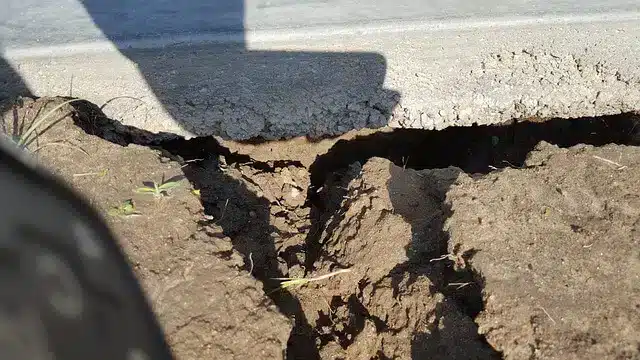Michigan homes have various types of foundations, and the type of foundation your home has matters because each type may require different repair solutions. Learning various foundation types also helps you identify potential causes of damage to your foundation. In this blog, we will delve into the details of common foundation types, the factors that influence foundation types in Michigan, how to identify the type of foundation your home has, and provide some maintenance tips tailored to your specific foundation.
Factors That Influence Foundation Types in Michigan
There are various factors that influence the kind of foundation that your home will have. Some of these factors include:
Soil Conditions in the Michigan Area
Different soil types, such as clay and silt, have different levels of weight-bearing capacity, which determines whether a shallow or deep foundation is required. Similarly, the strength and density of the soil influence its ability to support the weight of the structure, which is a crucial factor in the construction of a foundation.
Freeze-Thaw Cycles and Frost Lines
Freeze-thaw cycles and frost lines are factors in the type of foundation homes in Michigan have. The expansion and contraction of water (as it freezes and thaws) can cause significant stress on foundations, resulting in cracks, settlement, and other structural issues. Similarly, foundations need to be built below the frost line to prevent damage from frost heave.
Urban vs. Suburban Construction Trends
Urban and suburban construction trends significantly influence the types of foundations used for buildings. Urban areas tend to have high-rise buildings, which put a significant load on the structure and require a deeper foundation, most commonly in the form of poured concrete. In contrast, suburban areas often feature low-rise, single-family homes that typically have shallow foundations like basements or crawl spaces.
2 Common Foundation Types in Michigan
Michigan homes have various types of foundations. Here are the three most common types of foundations you can find in the area:
Full Basement Foundations
Full basement foundations are constructed below the ground level and involve a full or partial basement below the main floor. Basements provide an extra space for storage, utilities, or even finished living areas. They are typically made of poured concrete or concrete masonry units (CMUs) and extend under the entire house. Basement foundations are very common in Michigan because they are deeper and help protect the structure against frost heave.
Crawl Space Foundations
A crawl space foundation features a shallow enclosure beneath the house. This area typically has a limited height and only has access to plumbing and electrical systems, among other utilities. It’s so shallow that you can only “crawl” in it, hence the name. A crawl space foundation is typically supported by either a block-and-base system or a pier-and-beam structure. Since crawl spaces are generally open, you can get your crawl space encapsulated and insulated to control the temperature.
How to Identify the Type of Foundation in Your Home
If you are not well-versed in foundation types, here are some easy clues to identify the type of foundation in your home:
Clues Based on Age, Location, and Access
The age of your home can provide a simple clue about its foundation type. Older homes (pre-1930s) often feature stone foundations and brick foundations. Foundations built between the 1900s and 1960s typically feature pier-and-beam (crawl space) foundations and reinforced concrete block foundations. Slab foundations became common after the 1960s.
Another simple clue is checking your foundation’s access areas. If your home has a full underground level that’s easily accessible, it’s a basement foundation. However, if there’s a space you can crawl into between the ground and floorboards, it’s a crawl space foundation. If the house doesn’t have any accessible space below the ground floor, it has a slab-on-grade foundation.
The location of your home is also a big factor in the type of foundation your home has. Suburban homes typically feature crawl spaces and basements, whereas urban or city homes often have slab-on-grade foundations.
What to Look for in Basements, Crawl Spaces, or Slabs
To identify the type of foundation in your home, observe both the exterior and interior of your home. Your basement will be accessible from inside your home and will sit completely or partially below ground. Crawl spaces are low-lying areas under the home, typically accessible through vents along the walls and sometimes a small access door. The interior of a crawl space is typically an unfinished area with a dirt or concrete floor, and joists supporting the first floor. On the other hand, slab-on-grade foundations are characterized by the lack of space between the ground and subfloor. The house sits directly on the ground with no visible foundation wall or crawl space beneath. The flooring is directly on the concrete slab, with no space underneath for utilities or other components.
Foundation Maintenance Tips for Michigan Homes
Michigan’s unique climate and soil conditions can put your foundation, regardless of its type, at risk of damage. Therefore, it’s crucial to maintain your foundation from time to time to reduce the chances of deterioration, catch the signs of damage early on, and implement effective repairs. Here are a few foundation maintenance tips for Michigan homes:
- Manage water effectively: Safeguard your foundation from water damage by maintaining clean gutters and downspouts and ensuring proper drainage through efficient systems like French drains and sump pumps.
- Control vegetation around your foundation: Plant trees and large shrubs a safe distance from the foundation to prevent roots from growing underneath and causing soil movement. If needed, install root barriers to prevent aggressive tree roots from reaching the foundation.
- Conduct regular inspections: Walk around the perimeter of your home and inspect the interior of your basement or crawl space at least twice a year. Look for cracks, water pooling near the foundation, uneven floors, doors, and windows that stick, or gaps under floorboards.
- Address leaks promptly: Plumbing leaks are common, but they should be addressed promptly. Leaky pipes can soak the soil around the foundation and cause damage.
When to Call a Foundation Specialist
Not sure when to call a professional? Here are a few cases where a professional consultation from a foundation specialist becomes necessary:
Signs of Structural Issues
If you notice any signs of foundation problems or structural issues in your home, you should call a foundation specialist. You can call a professional if you suspect your foundation has damage, but you can’t pinpoint the problem. A professional foundation specialist will be able to identify the damage, determine the underlying causes, and implement a suitable repair solution.
The Value of Professional Evaluation and Repair
You can also call a professional foundation repair expert in Michigan to assess any damage and obtain estimates for the repairs. In this case, a specialist will conduct a thorough inspection of your home and give you a detailed report and quote. If you are wondering whether your foundation needs care, contact Bluebird CFW for a free inspection and expert foundation solutions.





